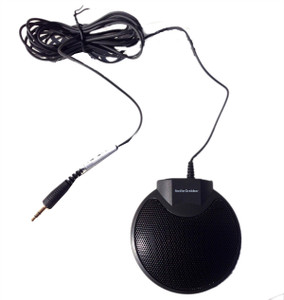

An online UPS is a battery-backup system whose battery is always engaged (online) between the input AC and the output AC. If you’re willing to part with a few Benjamins, you can assure yourself of pristine AC without ground-loop noise by using an online UPS (uninterruptible power supply) or an isolation transformer. If there are other people under the same roof, perhaps not. You might be able to make that work-if you live alone.
#Ez grabber audio buzzing tv#
The obvious solution to this type of noise is to not use those types of devices while you’re watching TV or listening to music.

It might be audible through your audio equipment or visible on your TV, or it might not. Ground loops are hardly the only thing that cause electrical noise pretty much any device with a motor (hair dryers and blenders, for instance), as well as light dimmers and failing fluorescent fixtures will create this type of interference. ViewsonicsĪ ground loop isolator for coaxial (antenna and cable TV) cables. If you’re connecting directly to a TV, there are ground-loop isolators available for $20 to $30. If you’ve traced the problem to the TV signal wire that’s attached to a cable modem or similar (disconnect it and see if the problem goes away) replace that piece of equipment-there’s something wrong with it. Normally-because of the isolation built into cable modems, cable boxes, and similar equipment-this will occur only if you’re connecting directly to the TV or to a video recorder. I’ve received some pretty annoying shocks when handling coax signal splitters. If those methods don’t fix things, the problem could be an over-the-air (OTA) antenna or a cable-TV coax cable that has its own path to ground. There are also DIY solutions online that are less expensive if you have the skills. EbtechĮbtech’s Hum X eliminates ground loop noise safely. You’ll find plenty of information online that will show you how, but the task requires moderate skill with a soldering iron and similar tools. If you have the skills, you can build your own hum eliminator for about $10 or $15. There are other products that do roughly the same thing, some of which interrupt the loop in the signal cables, but they’re all expensive as well. If using an extension cord is impractical, you can buy a hum eliminator, such as Ebtech’s Hum X. Look up Lee Harvey and Stone the Crows for an extreme example of what can happen with high-powered equipment. You could just “pull the ground” by using a three-prong to two-prong adapter but this represents a potential shock hazard. Self-powered speakers and subwoofers come to mind. There might be occasions where you simply can’t reach the same outlet with a piece of equipment. If you still get hum, see if your antenna or cable wire has its own ground connection.

Rob Schultz Powering connected equipment from the same AC socket eliminates most ground loops. Most multimedia setups can be handled easily by a single 10-amp circuit and most household circuits can handle at least that. As shown below, simply plug all your equipment into a single power strip, surge protector, or power center and plug that into the wall. Rob Schultz One way to create a ground loop is to power inter-connected equipment from different AC outlets: The ground travels through the shielding of the signal cables.Īnything that breaks the loop will remove the noise, and the easiest way to do it is to power everything through a single AC socket. You can see how a loop is created in the diagram below. In the simplest terms, this creates a single-loop antenna that just loves to suck in various types of noise via electromagnetic induction. It could also be a much quieter, yet equally annoying buzz or hum that you only hear when the room is otherwise quiet.Ī ground loop typically occurs when one or more pieces of your entertainment system are plugged into the AC (alternating current) at different locations, then connected together by electrical (versus optical) signal cables-RCA, HDMI, composite, component-whose shielding is connected to ground. The most common manifestations are a loud buzz or hum coming through the speakers, or scrolling bands on a TV screen. The number-one cause of unusual audio noise and weird video is the ground loop, simply because it’s so darned easy to create.


 0 kommentar(er)
0 kommentar(er)
